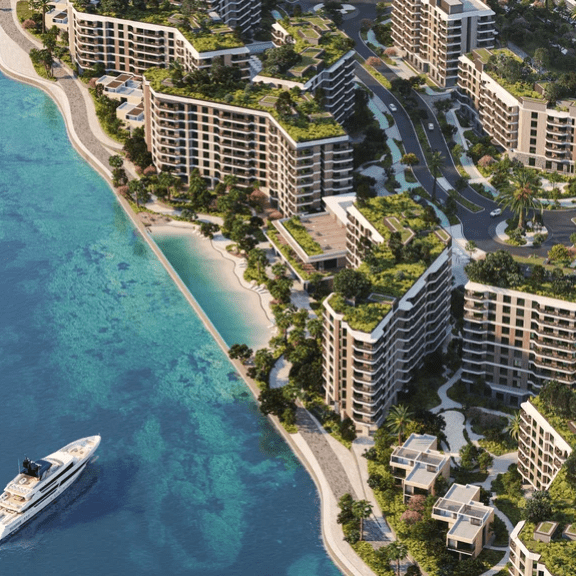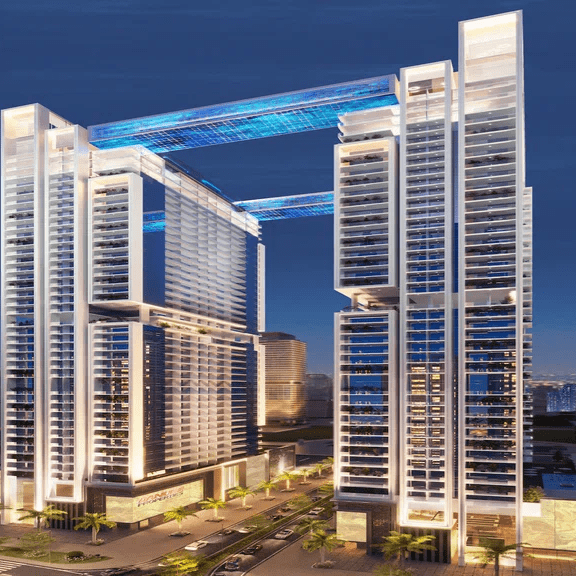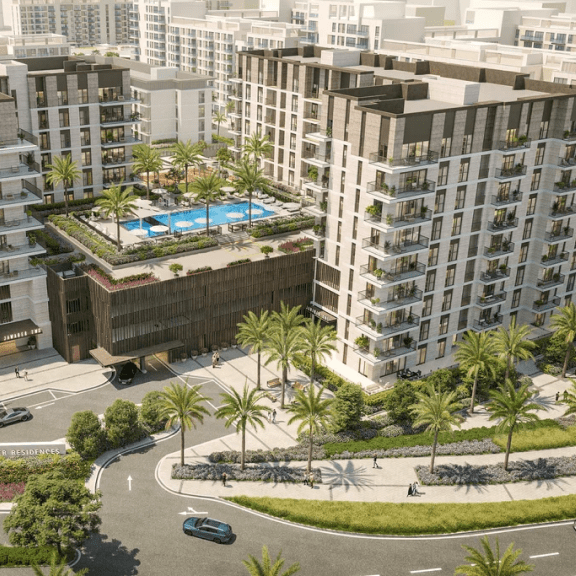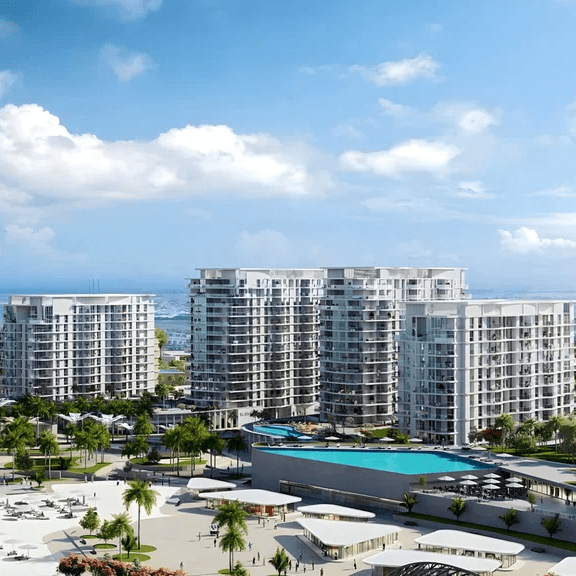The COVID-19 pandemic was a phenomenon (for lack of a less morbid word) that swept industries, sectors, systems, and world powers in unprecedented ways. With numbers in the red, the prevailing conversation centred on whether anything would be normal again – and if we’d ever see upward trends after a destabilising period.
For the Dubai residential property market, though, the answer to that question has been resoundingly positive. We’ve witnessed a remarkable price recovery since the pandemic, marking the onset of its 3rd property cycle.
Let’s explore the factors contributing to Dubai's property cycles, the current cycle, lessons learned from the 2008 housing bubble, and potential red flags in the current cycle.
The Road to Recovery
Just how did Dubai's residential property market break free from the pandemic’s “death grip,” as many have described it? The answer: High Net Worth Individuals, also known as HNWIs.
Over the last two decades, Dubai’s vibrant metropolis has witnessed three distinct property cycles. The first cycle spanned roughly six years, culminating in a peak in 2008. The second cycle was a four-year journey, peaking in 2014. Today, we find ourselves experiencing a third property cycle.
Dubai's residential market has undergone a remarkable price recovery, largely driven by the enthusiasm of HNWIs who have injected substantial investments into the city's real estate, driving up demand and prices. The city drew in a whopping $12.8 billion worth of foreign direct investment capital.
Image: twitter.com
Despite initial uncertainties, the market showed remarkable resilience. But there was a much more solid reason for this, tied into the panic of the pandemic. Safety has always been an important concept, and it has become even more important with COVID-19.
As global travel restrictions were imposed, many HNWIs found Dubai's real estate an appealing investment option due to its stability and quality of life. The pandemic highlighted the need and importance of safe havens, and Dubai fit the bill.
We’ll come back to the impact and inner workings of this third cycle, but first, an overview of the residential market in Dubai and the previous cycles.
Overview of Dubai's Residential Market
Dubai's residential property market is unlike any other on the planet. It’s a tale of ambition and luxury.
Imagine viewing the Burj Khalifa – the world's tallest building, or the iconic Palm Jumeirah archipelago with its luxurious villas and pristine beaches. It’s a sight to see for tourists, but these are the everyday realities in Dubai's residential neighbourhoods.
But it's not just the jaw-dropping skyscrapers and man-made islands that set Dubai apart. It's the audacity to dream big, turn desert sands into sprawling metropolises, and spare no expense when creating homes that redefine luxury. Dubai doesn't just build residential complexes; it crafts experiences. From indoor ski slopes to underwater bedrooms, Dubai's real estate is synonymous with extravagance.
The best part about it all is that, unlike structures and buildings where the extravagance is merely for showoff, it’s more of a key ingredient here.
New buildings in the UAE
Past Cycles and Their Impact
To truly understand Dubai's property market, we need a peek into its history. Property prices soared in the first property cycle, lasting approximately six years, reaching a zenith in 2008. At the time, the city was a playground for real estate developers, and investors flocked to cash in on the boom.
Then came the global financial crisis, sending shockwaves through the world, and Dubai's skyline was not spared.
The crisis forced much of the world to step back and the market to reevaluate its ambitions. It was a wake-up call, but Dubai doesn't back down from a challenge. Swift government action and strategic reforms helped Dubai bounce back. True to form, the market regained its composure and reached new heights in the second property cycle, peaking in 2014.
You may ask, what’s next after a peak? Surely there’s no place to go? But even at its peak, Dubai was a city in metamorphosis. The construction never stopped, and innovation was its heartbeat. Yet, this dynamism came at a cost. An oversupply of properties led to a decline in demand, and with subsequent price drops, the market felt the heat.
Specific Factors in the Resilience of Dubai's Market
Dubai's real estate market is not just influenced by market forces; it considers the impact that foreign investment and government initiatives play. The Dubai government recognized the importance of opening its doors to international investors early on, and it was a game-changer.
For instance, 2002 saw the Crown Prince of Dubai, Mohammed bin Rashid Al Maktoum, issue a decree allowing foreigners to purchase and own real estate in Dubai. This decision was revolutionary and catapulted Dubai onto the global stage. It wasn't long before the city transformed into a magnet for investors from all corners of the world.
Foreigners were initially limited to specific freehold zones, but the city's growth soon led to further relaxation of property ownership laws. As a result, Dubai experienced an unprecedented surge in property prices, with values skyrocketing by 59% between late 2007 and October 2008.
The global economic crisis in 2008 caused turbulence in Dubai's real estate market. However, the government's swift response, including strict consequences for non-compliance with payment schedules and the registration of property deals, helped Dubai restore demand in five years.
Dubai's real estate market continued to evolve but faced challenges, including the oversupply of properties mentioned earlier and the impact of the COVID-19 pandemic. But, measures like increasing the fee for transferring ownership rights and imposing limitations on mortgage sizes have helped to put things back on track.
We’ll take a look at the current 3rd property cycle, but first, what led to the 2008 housing bubble.
Photo: Danor Aharon (Pixabay)
Factors Leading to the 2008 Housing Bubble
The 2008 housing bubble in Dubai was fueled by a combination of
- excessive speculation,
- overdevelopment,
- and lax lending practices.
Here’s what went down. Excited by the booming market prospects, investors engaged in speculative behaviour: instead of using the properties they purchased for their own use or rental income, these investors were buying properties expecting their prices to increase quickly. Property developments mushroomed across the city, with some even lacking the infrastructure to support them. Meanwhile, lenders extended credit to buyers with minimal scrutiny. This unchecked enthusiasm led to the artificial inflation of property prices.
Then, the global financial crisis sent shockwaves through Dubai's property market. As credit markets tightened worldwide, Dubai's real estate sector was hit hard. Property values crashed, leaving investors and developers stranded. Many of the city’s ambitious projects, costing about $582bn, had to be put on hold or cancelled, a stark contrast to the earlier construction frenzy. Elsewhere, unsold units littered the market, and rental rates dropped significantly as job opportunities diminished.
To mitigate the crisis, Dubai's government took bold measures. They established regulatory bodies to oversee the real estate sector, introduced transparency in property transactions, and revamped property laws. Stricter lending practices were enforced, and developers were held accountable for project delays. These efforts gradually restored confidence in the market, leading to a steady recovery.
You can read more about the Dubai Housing Bubble here: The Dubai Housing Bubble: Will It Burst?




